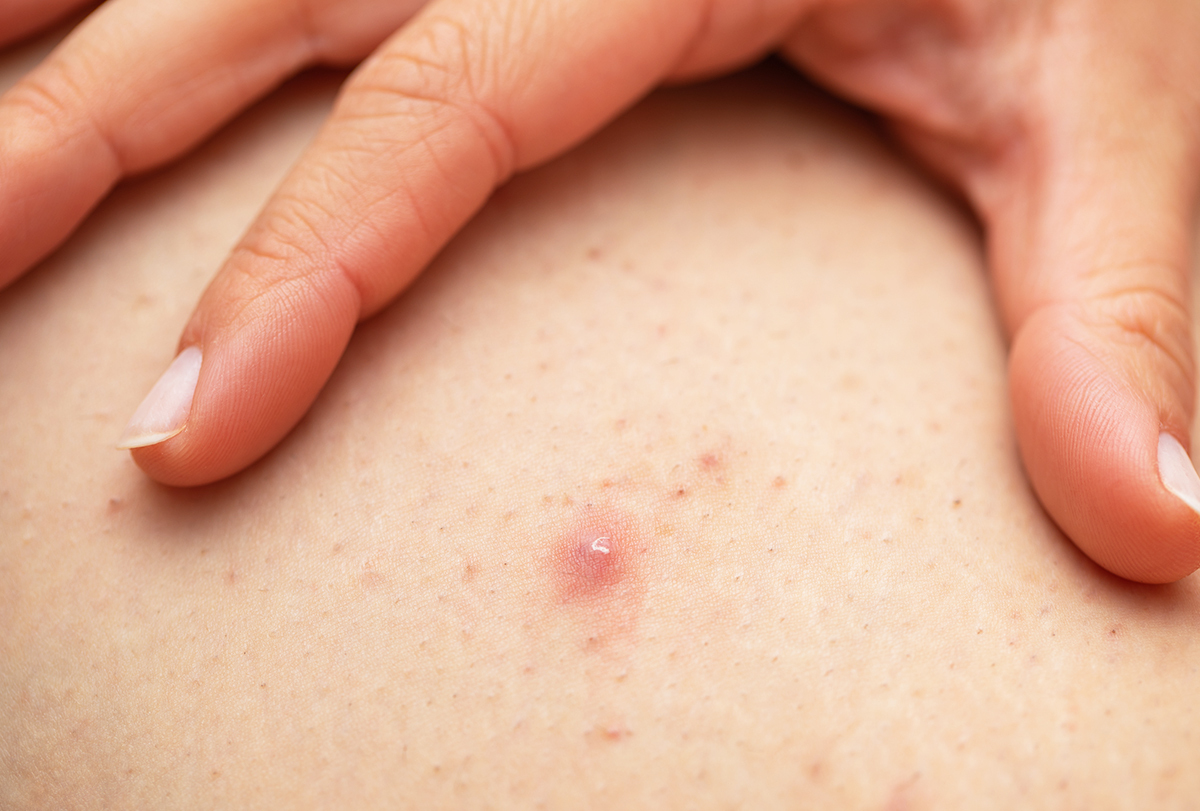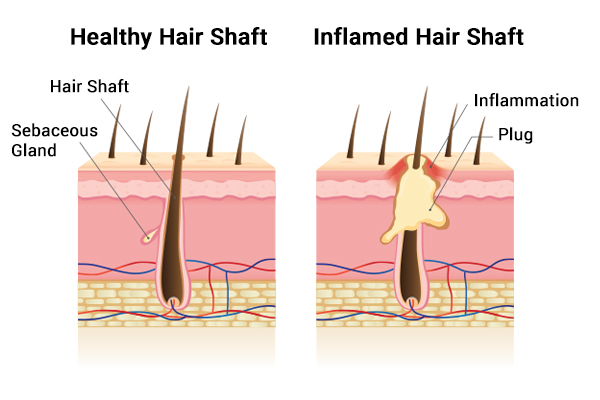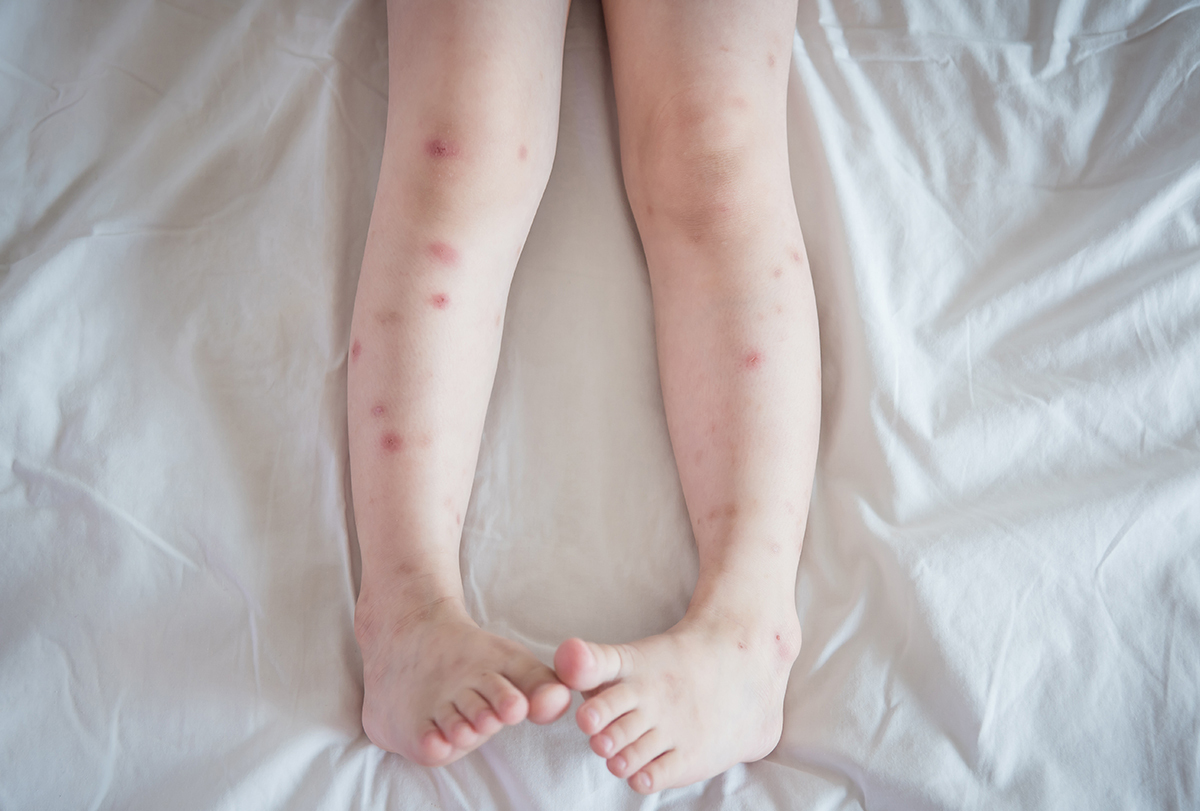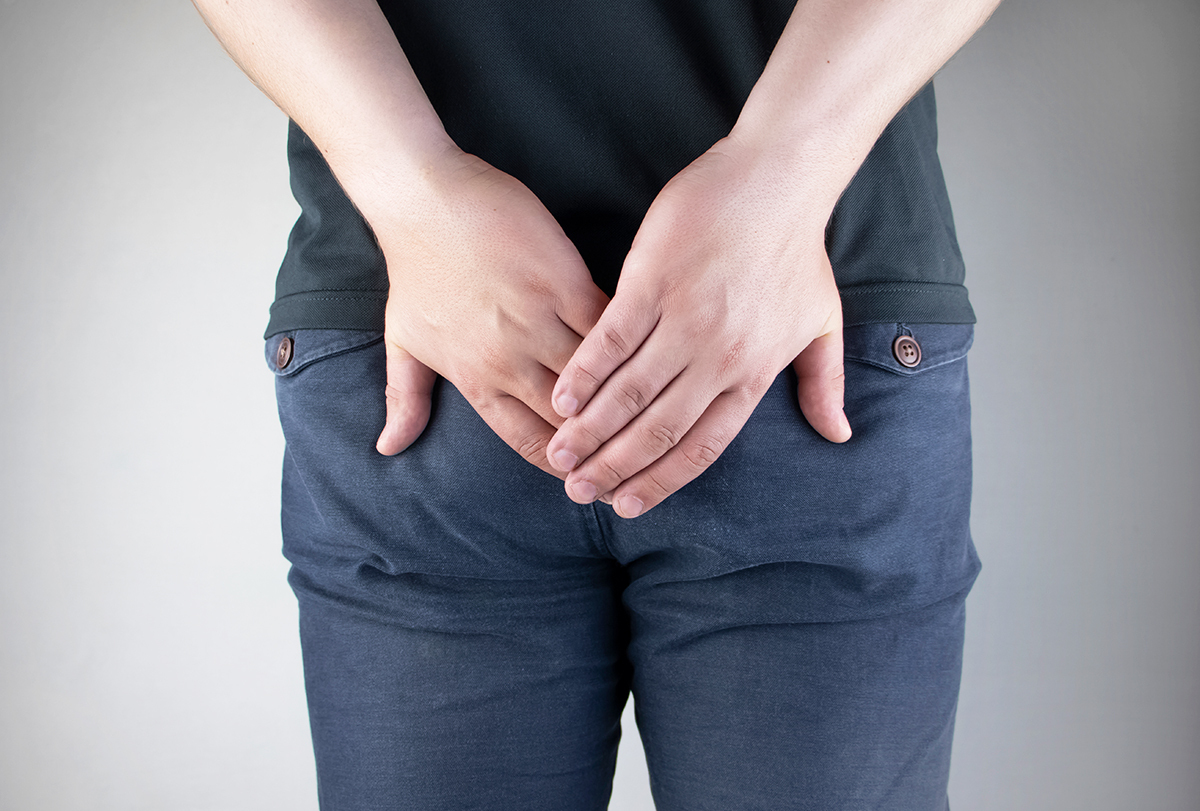
In this article:
Your entire body is covered with tiny pores, each of which leads into a small canal-like structure under the skin called the hair follicle. The follicle contains a strand of hair that grows out of the skin and an oil gland that keeps the skin naturally lubricated.

If these follicles become infected with bacteria or fungi, inflammation occurs in the area, which can lead to discomforting symptoms.
Infection or inflammation of the hair follicle is referred to as folliculitis, (1) and this article will give you some key insights into its causes, symptoms, and treatment.
Types of Folliculitis
Folliculitis is divided into two main categories:
- Superficial folliculitis, wherein only part of the follicle becomes infected, resulting in relatively mild symptoms
- Deep folliculitis, wherein the whole follicle becomes infected, resulting in severe symptoms
Superficial folliculitis
Superficial folliculitis can be of the following types:
- Bacterial folliculitis – The hair follicle becomes inflamed after getting infected with skin-dwelling bacteria, mainly Staphylococcus aureus. (2)
- Hot tub folliculitis (pseudomonas folliculitis) – The hair follicle becomes infected with pseudomonas bacteria, which is often found in poorly maintained hot tubs and heated pools that do not have properly regulated chlorine and pH levels. (2)
- Razor bumps (pseudofolliculitis barbae) – It develops when you shave too close to the skin, resulting in ingrown hair. This condition mostly affects curly-haired males, and the razor bumps typically appear on the face and neck. (2)
- Pityrosporum folliculitis – It is caused by the overgrowth of yeast inside the hair follicle leading to a fungal infection that is characterized by red, itchy, pus-filled blisters that last a long time and usually appear on the back, chest, shoulders, upper arms, neck, and face. (2)
Deep folliculitis
Deep folliculitis can be of the following types:
- Sycosis barbae – It mostly affects young males when they first start shaving. (2)
- Gram-negative folliculitis – It is caused by the prolonged use of antibiotic medication for acne. (3) The acne-causing bacteria develop resistance to the medication over time, which means the antibiotics become less and less effective in killing the germs and your acne gets more severe.
- Boils (furuncles) and carbuncles – These are painful pustular bumps that develop when the overgrowth of staph bacteria inside the hair follicle triggers a deep and severe infection. If only one hair follicle is infected, a single boil forms on top of the skin called a furuncle. If the infection spreads to the surrounding hair follicles, a cluster of boils that are interconnected inside the skin develops, known as a carbuncle. (4)
- Eosinophilic folliculitis – It occurs due to compromised immunity and mainly affects people with HIV/AIDS. (5)
Causes of Folliculitis

Folliculitis refers to inflammation of the hair follicle, which mostly occurs due to bacterial or fungal infection but can be caused by injury or irritation as well. It is a pretty common condition that can affect any part of the body with hair growth.
There are two main reasons for the development of infection inside the hair follicle:
- Buildup of excess sebum, dirt, dead cells, and other impurities inside the skin pore or hair follicle
- Damage to the follicle or overlying skin that allows germs to enter inside the body tissue and thereby trigger an infection
Certain strains of bacteria and fungi live naturally on the skin without causing any harm but can trigger an infection if they enter the skin tissue through a tear, cut, or wound.
Similarly, when a skin pore/follicle gets clogged with oil, dirt, and cellular debris, these skin-dwelling microbes may trickle inside to feed on the organic matter and grow rapidly, leading to an infection.
Moreover, any tear in the skin or follicle will provide easy entry to these microbes, resulting in an infection.
A few common factors that can contribute to the development of folliculitis include:
- The overgrowth of Staphylococcus (staph) or other common skin-dwelling bacteria inside the hair follicle (the most common cause of folliculitis) (6)
- Having excessively oily or sweaty skin, which increases the risk of clogged pores
- Wearing tight synthetic clothes or rubber gloves, which can make the skin sweat profusely
- Dermatitis
- Acne
- Scrapes, cuts, or any kind of injury that erodes the topmost layer of the skin or damages the underlying hair follicle
- Excessive use of greasy ointments that can clog your pores or follicles
- Using an improperly maintained hot tub
- Shaving, plucking, or waxing, (7) which can damage your skin or hair follicle
- Certain topical medications such as coal tar
- Weight gain (8)
- A weakened immune system
- Not showering after excessive sweating from hot yoga or an intense workout
Signs and Symptoms of Folliculitis

When a hair follicle gets infected with germs, the body’s immune system kicks into action to fight the invaders. This involves sending white blood cells and other germ-fighting substances to the infected area, triggering inflammation and pus buildup inside the follicle.
As a result, the follicle swells up and ultimately forms small red blisters on the surface, usually with a white head. These pus-filled pimples can occur anywhere on the body, but the most commonly affected areas include the legs, face, chest, back, hips, and scalp. (9)
Folliculitis can manifest differently in different people, but its most common signs and symptoms include:
- Sudden breakout of small bumps around the infected hair follicle
- Blisters that are usually surrounded by a red ring, which is a sign of the infection (8)
- Pus that forms a small white head on top
- Pustular lesions that may break open and crust over
- Redness, swelling, itchiness, pain, and tenderness in the affected area, although some people don’t experience pain in the area
- A slight burning sensation or soreness around the infected area (10)
Treatment for Folliculitis

Commonly used medications for folliculitis include:
1. For bacterial folliculitis
Topical antibiotics such as permethrin 5% cream (9) and 15% azelaic acid foam (11) are the first-line treatment for mild forms of bacterial folliculitis. These ointments are usually available in the form of cream, lotion, or gel and work by killing the bacteria and thereby clearing the infection.
If your folliculitis is caused by a severe or recurrent bacterial infection that does not respond to topical antibiotics, the doctor may prescribe a course of antibiotic pills.
2. For fungal folliculitis
The doctor will prescribe topical antifungal products such as creams and shampoos to clear the underlying fungal infection. If that doesn’t work, the doctor may prescribe antifungal pills to halt the fungal growth inside the follicle.
Fluconazole is the most preferred oral antifungal medication since it has relatively lesser side effects than other such pills. (9)
3. For noninfectious folliculitis
If you have noninfectious folliculitis, your doctor may recommend a topical corticosteroid or steroid cream to curb the inflammation. You can also take OTC painkillers such as acetaminophen (12) and nonsteroidal anti-inflammatory drugs (NSAIDs) to relieve your symptoms. (13)
Other interventions to manage folliculitis include:
1. Minor surgery
The doctor may surgically drain the pus from a large boil or carbuncle to relieve the pain, accelerate skin healing and minimize scarring.
2. Light or photodynamic therapy
This procedure involves using different types of light to kill the bacteria, reduce the activity of the sebaceous glands, or destroy the follicle itself. It is a painless, noninvasive treatment that delivers fast results, often within a few weeks. (14)
3. Laser hair removal
This treatment uses targeted heat energy to burn the infected hair follicles. The idea is to destroy the host environment of the germs to clear the infection. The loss of hair follicles leads to lesser hair growth in the treated area.
The downsides of laser therapy are it is fairly expensive, requires multiple sessions, and may cause side effects such as post-inflammatory skin darkening, scarring, and blistering. (15)
Diagnosing Folliculitis
Diagnosing the root cause of folliculitis starts with a physical examination, which may be followed by a few additional tests.
If a bacterial infection is suspected, the doctor will collect a swab sample of the pus oozing from the bump and send it for lab testing to check for the presence of bacteria.
In rare cases, the doctor may order a skin biopsy to eliminate other serious conditions. The doctor may even examine the affected skin under a microscope through a technique called dermoscopy. (16)
When to See a Doctor

Folliculitis requires medical attention if:
- Your symptoms persist for more than a few days without any sign of improvement.
- Your symptoms keep coming back.
- Your symptoms become progressively worse or widespread.
- You develop large painful blisters that are hard to touch.
- Your blisters start to discharge a lot of pus or fluid.
Final Word
Most cases of folliculitis tend to be mild and resolve on their own with simple self-care measures. However, proper medical treatment is needed if the condition becomes chronic, severe, recurrent, or widespread.
If left untreated, this type of deep folliculitis can end up destroying the hair follicle and causing permanent scarring.







